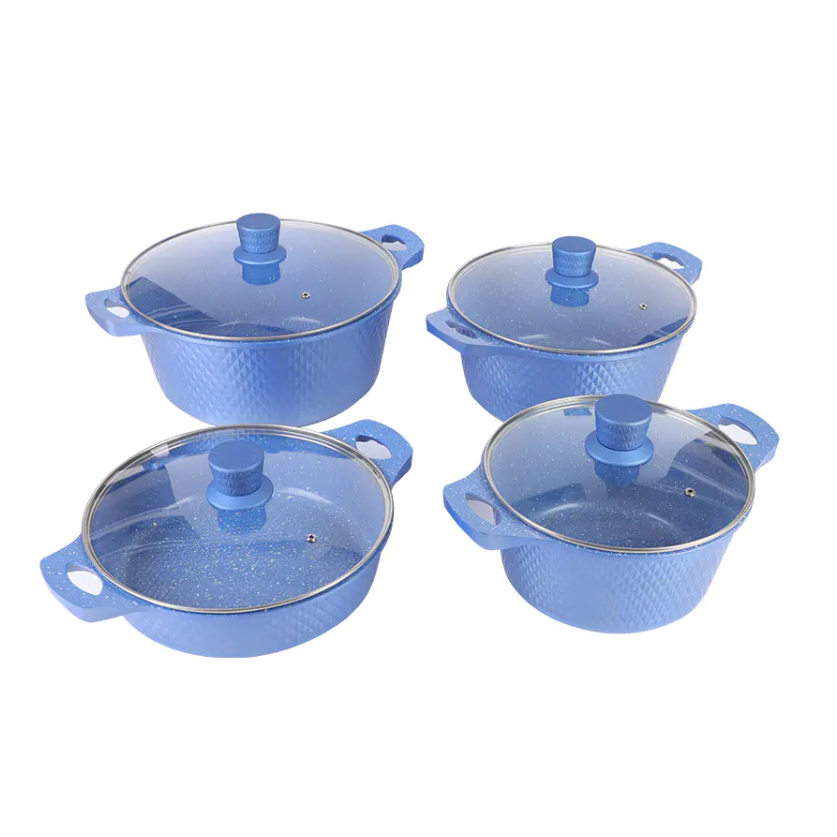Cast Aluminum Cookware: A Manufacturer’s Perspective

From a user’s point of view, cast aluminum cookware offers a blend of convenience, durability, and performance that makes it an appealing choice for home cooks. Known for its lightweight nature and excellent heat conductivity, cast aluminum cookware provides a practical solution for those who want to prepare meals with ease while ensuring consistent results. However, like any kitchen tool, there are factors to consider when choosing cast aluminum cookware to meet personal preferences and cooking needs.
One of the main reasons users opt for cast aluminum cookware is its heat conductivity. Aluminum heats up quickly and evenly, reducing the likelihood of hot spots that can cause food to cook unevenly. This feature is particularly appreciated when preparing delicate dishes, such as sauces or stews, where precise temperature control is important. Users often find that cast aluminum cookware enables them to cook meals faster and with more consistent results compared to other materials like stainless steel or traditional cast iron.
Another significant advantage of cast aluminum cookware is its lightweight design. Many cooks prefer lighter cookware, especially when preparing large meals or using pots and pans frequently. Cast aluminum is much lighter than cast iron, making it easier to lift, maneuver, and handle, even when full. This is particularly beneficial for users who may have limited strength or experience difficulty lifting heavy cookware.
Durability is also a key consideration for users. While cast aluminum is lighter than cast iron, it still offers significant strength and resilience. Cookware made from cast aluminum can withstand regular use, high cooking temperatures, and proper cleaning. However, users should be mindful of how they handle their cookware. Although it is sturdy, cast aluminum can be susceptible to damage if dropped or mishandled. Users may also notice that cookware with thin walls may be prone to warping over time, particularly when subjected to high heat.
To further enhance the user experience, many cast aluminum cookware pieces come with non-stick or enamel coatings. Non-stick coatings make cooking and cleaning much easier by preventing food from sticking to the surface. This is particularly helpful for cooking foods like eggs, fish, or pancakes. Enamel coatings, on the other hand, offer an additional layer of protection, making the cookware more resistant to staining and rust. These coatings also make it easier to clean, reducing the effort required to maintain the cookware’s appearance.
One of the challenges users face with cast aluminum cookware is maintenance. Although it is easier to clean than traditional cast iron, some users may find that non-stick coatings wear off over time, especially if the cookware is subjected to high heat or abrasive cleaning methods. It is important for users to follow the manufacturer’s care instructions, such as using gentle utensils and avoiding cooking with high heat for extended periods, to prolong the life of their cookware.
In conclusion, cast aluminum cookware offers several advantages for users, including excellent heat conductivity, a lightweight design, and durability. While there are some considerations regarding maintenance and handling, the overall ease of use and performance make it a popular choice in many kitchens. Users who are mindful of care instructions and the type of coating on their cookware can enjoy reliable, consistent cooking for years to come. As technology advances, users can expect even more innovative designs and features in cast aluminum cookware to further enhance the cooking experience.
- Art
- Causes
- Crafts
- Dance
- Drinks
- Film
- Fitness
- Food
- Games
- Gardening
- Health
- Home
- Literature
- Music
- Networking
- Other
- Party
- Religion
- Shopping
- Sports
- Theater
- Wellness


